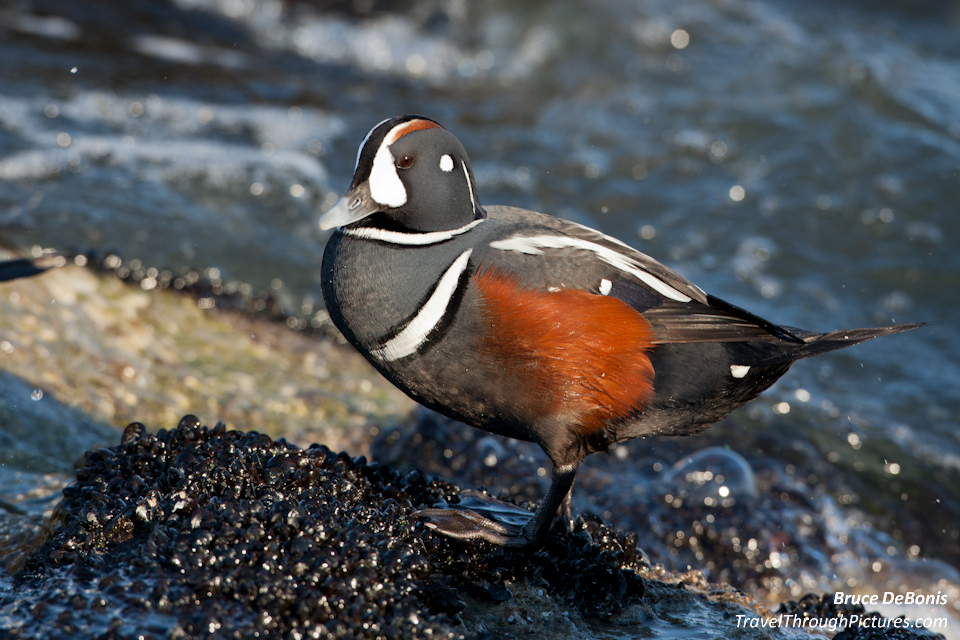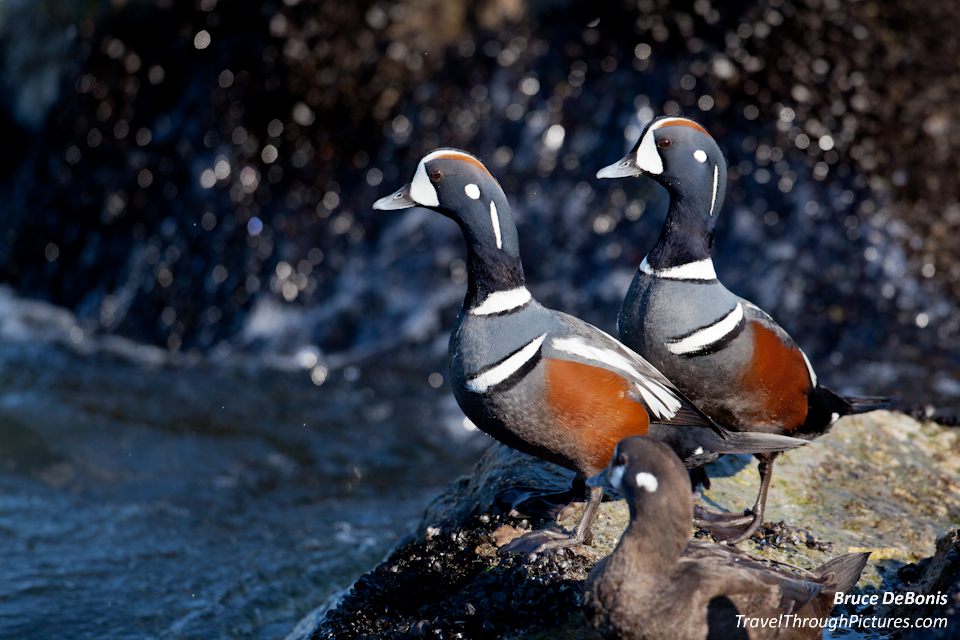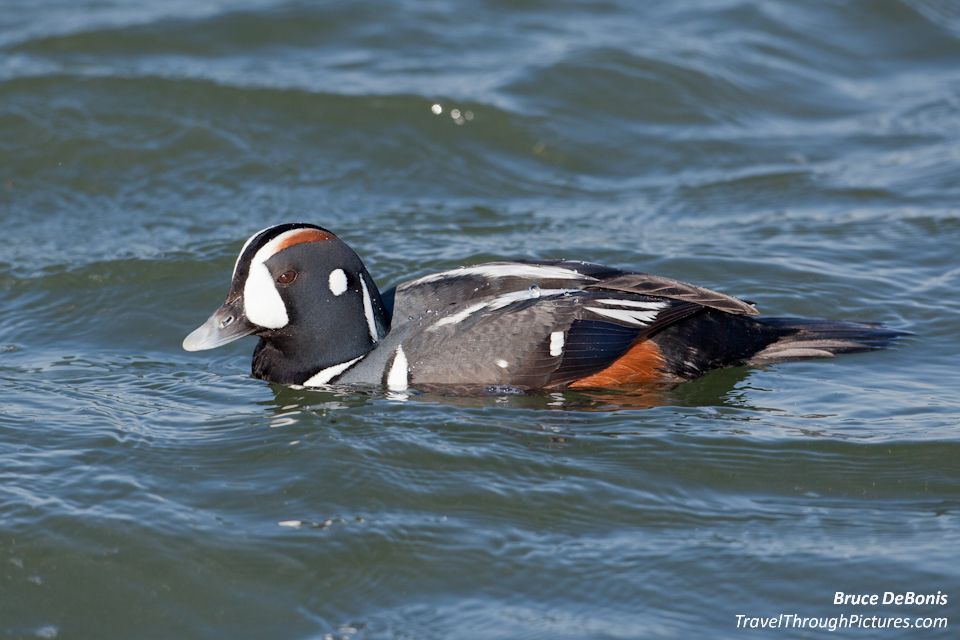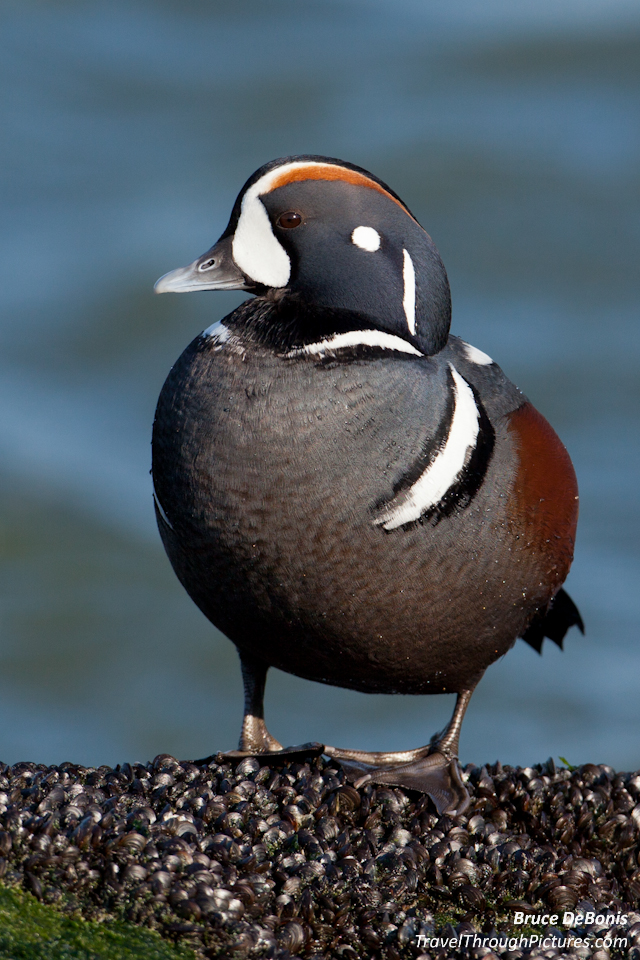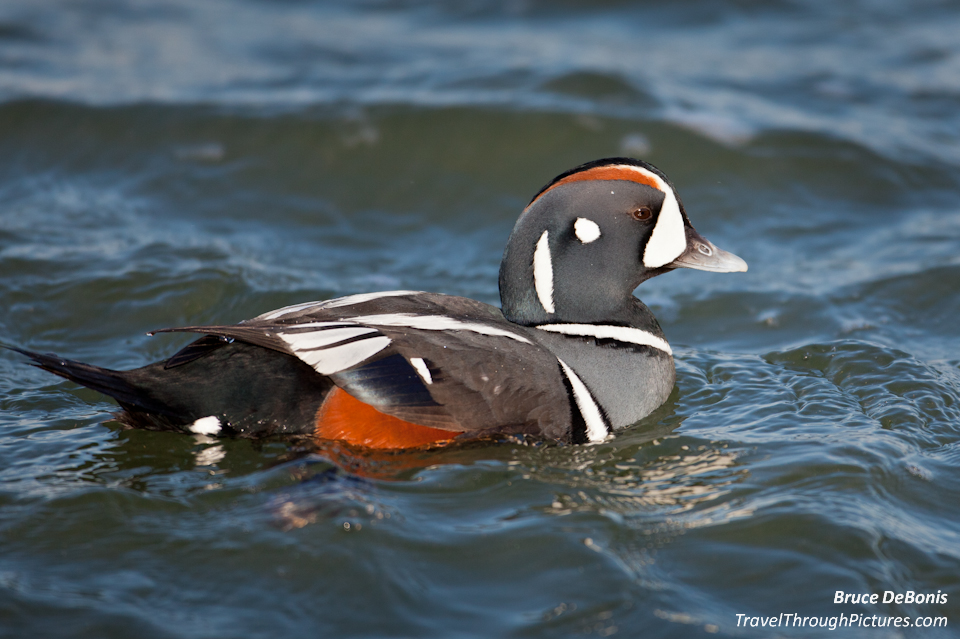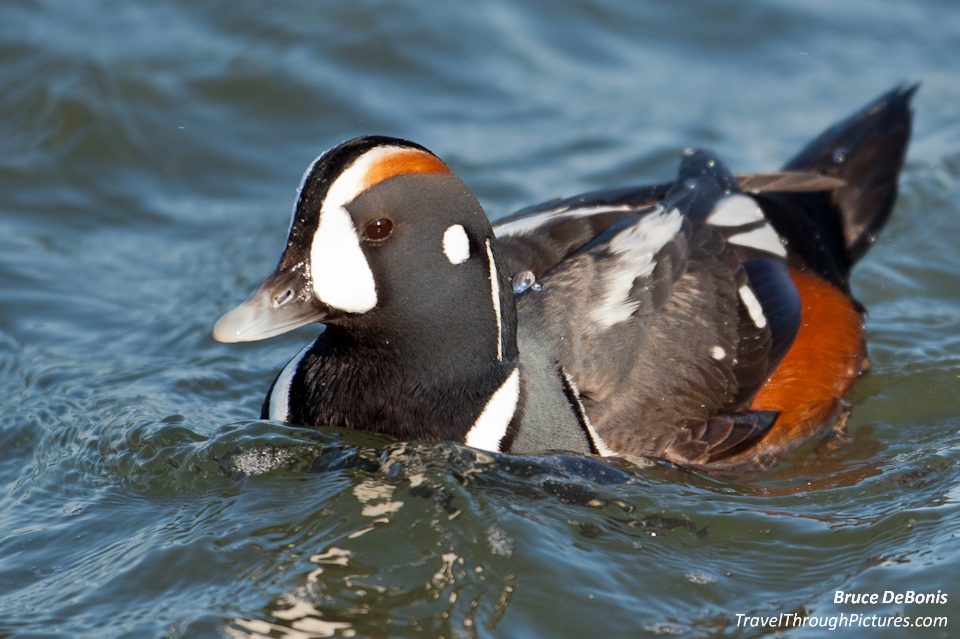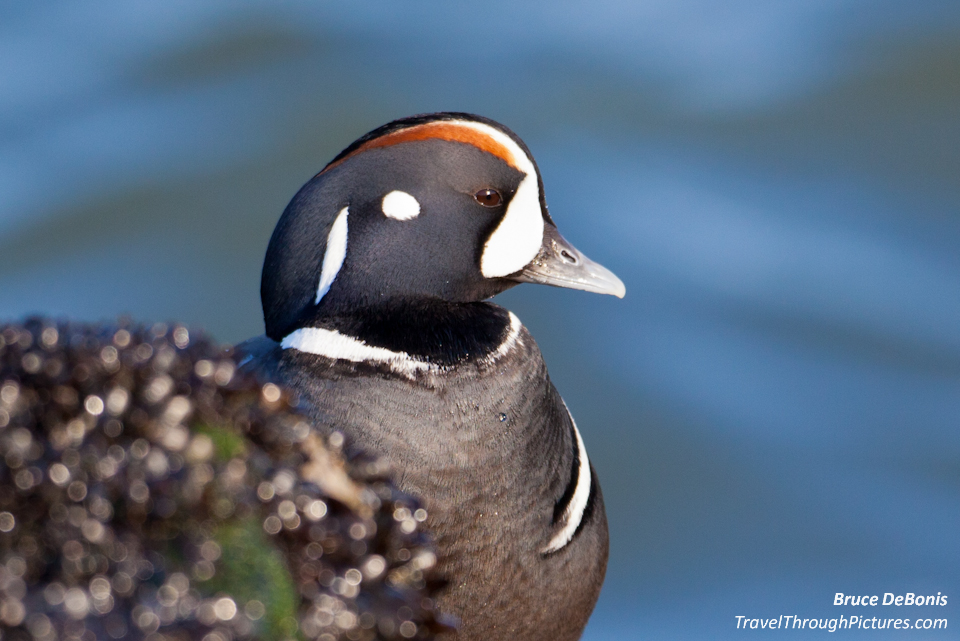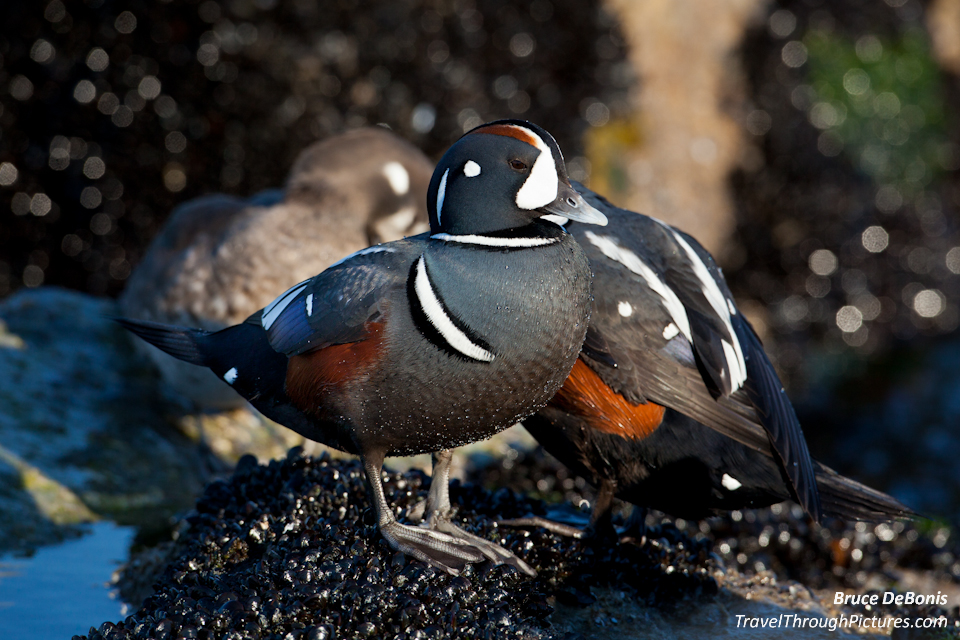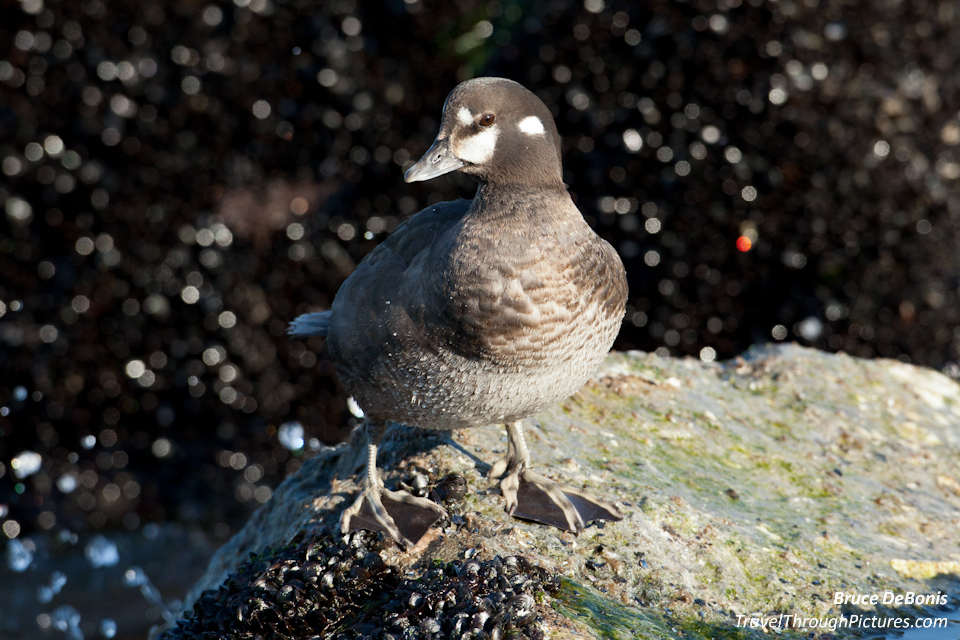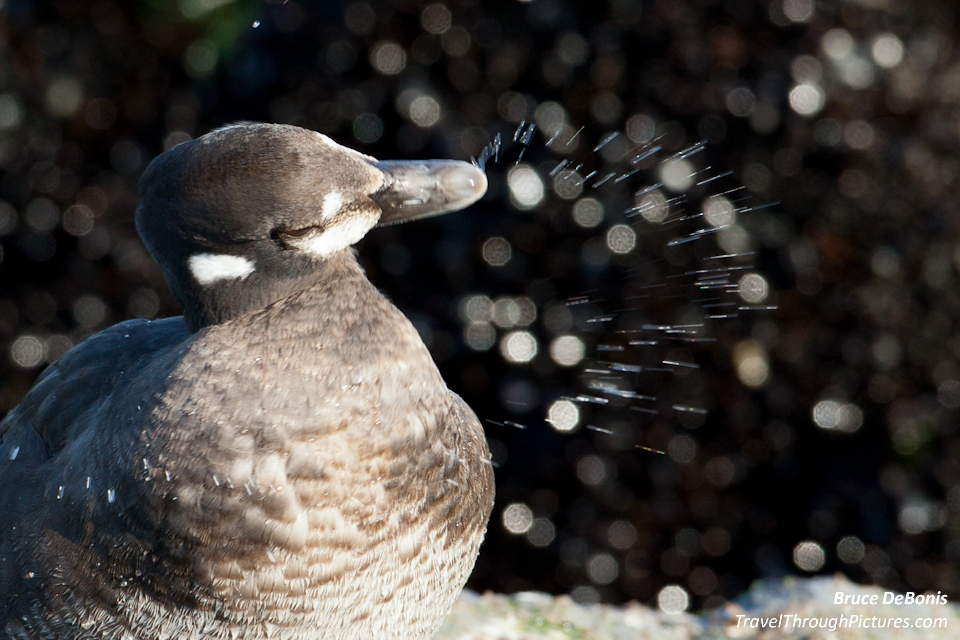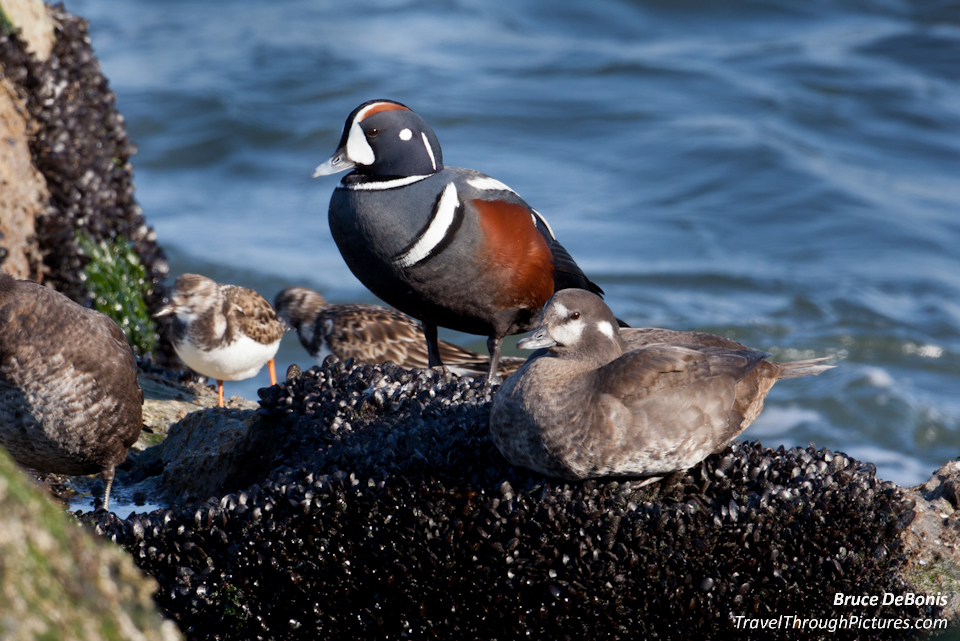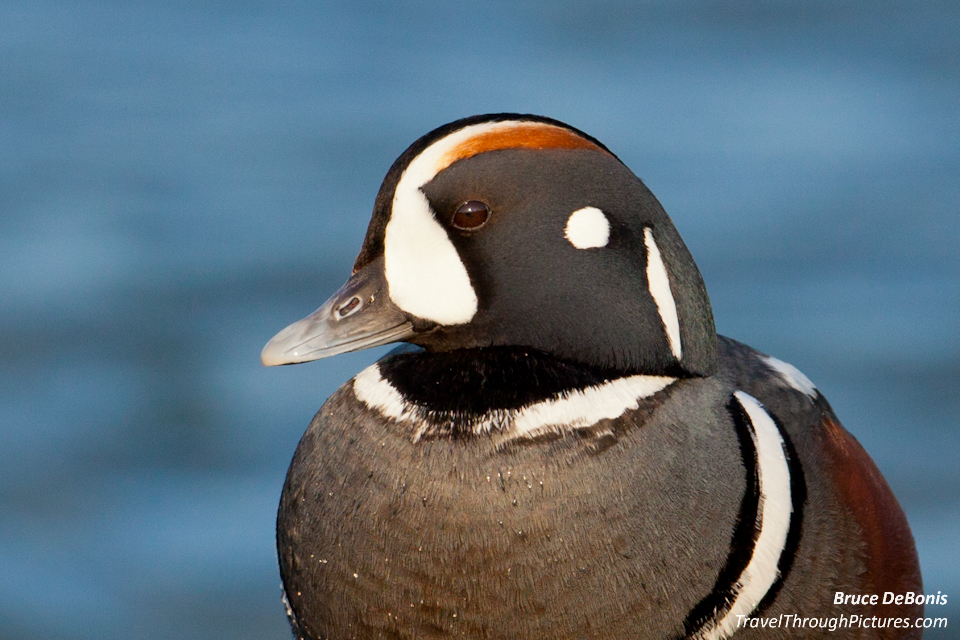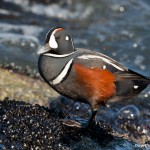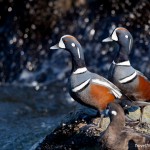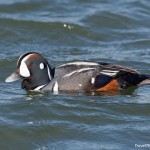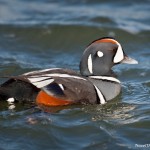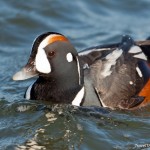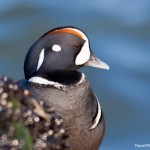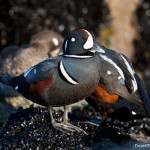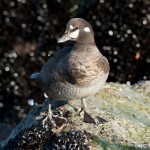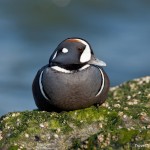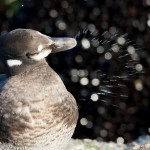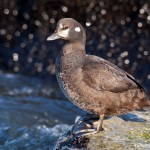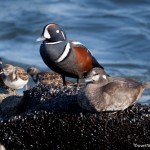Harlequin Ducks and Sitting in Bird Poop
Why is it we like some things and not others purely by their looks? This probably explains why my mother paid my friends…er… um… these Harlequin Ducks sure are cute eh?
These guys are the big attraction every winter at the Barnegat Light NJ, jetty. These daredevils bob up and down in the crashing water along the jetty. Why they are not pressed duck on the rocks from the angry surf is beyond me. I guess Darwin was on to something here.
Click here for more photos I took at the jetty of Ratty Loons, and Ruddy Turnstones and Purple Pipers.
Patience
The trick to photographing these buggers is patience but first you have to find them. There are always Birder Brains and photographers out there so you just ask where they are. Then you creep up on them, spy them with your binoculars, and see if they are drifting and swimming, or sleeping on the rocks. Then you sneak up on them. If they are drifting get in front of them and wait for them to come to you. If they are sleeping, go real slow, stop for a while, then sneak some more.
Your instinct is to get as close as you can but you are playing Russian Roulette with getting these pictures. One abrupt move or get to close….. shwoosh… they are gone and that is it. This is why you need to know your lens and camera so you know when to stop creeping and take pictures. I try and push it and get as close as I can, but do it slowly. Patience pays dividends.
So when I feel I am close enough, I find a nice patch of wet bird poop and sit down. You can be in denial and try to find a dry spot, but forget it. Accept the realities of nature. What is more important to you, getting snaps of a life time or being comfortable?
The Volume Game, Change the Aperture, Re-Focus
I got some great shots of these little guys, but to be honest, the good snaps were only a very small percentage of what I shot. So….. shoot a ton as electrons are free. I start out with my camera in my standard start-up settings and go from there. I shoot a ton wide open at f/4 with my Canon 500mm to get blurry, arty backgrounds, then stop it down a few clicks, shoot a ton, stop it down a few more clicks… then start over wide open. This gets me the both of best worlds: wide open = blurry, arty backgrounds, and closed down = more in focus.
To repeat, these steps are:
- Start with my standard settings
- Open aperture all the way (smallest f/number)
- Compose your shot, determine your focus point, focus using the back button, recompose
- Rapid fire two shots with one squeeze
- Stop down the aperture a few clicks, refocus, rapid fire two shots with one squeeze
- Stop down the aperture a few more clicks, refocus, rapid fire two shots with one squeeze
- Go back and start over from step 2
When my shots are crap, either the composition is bad such as the duck turns away or the background looks stupid. But the biggest reason for my crappy photos is blurry and out of focus subjects. So I refocus every click or two and I shoot in double bursts. The second shot is usually better because my hand and fingers are no longer squeezing the shutter. What to focus on? When you are shooting an animal, bug, or person, the closest eye is usually your best bet.
When you are trying to focus on an eye, you have to turn off all of your auto focus points and high tech wizardry, and just set the center point as active; this is part of my standard setup. Only then do you have the control you need to take a great photo. Oh, and use back button focus for even more control. This setting in your camera decouples focusing from your shutter button, and puts it on a dedicated button on the back of your camera. This is the only way to get this stuff. At least it will get you the highest percentage of keepers.
I use a tripod out on the jetty with this 500mm lens which is really tricky to get situated. I find a place to sit and then I set the ‘pod around me and adjust the legs to be level with the feet hooked into crags and jags in the rocks. One slip and the whole thing drops between the rock and into the salt water. Not a good thing.
The Equipment:
- Canon 5D Mk II
- Canon 500mm f/4.0 L IS
- Gitzo tripod with Wimberly head
- Merrell boots with poop-gripper soles
- Wet butt

